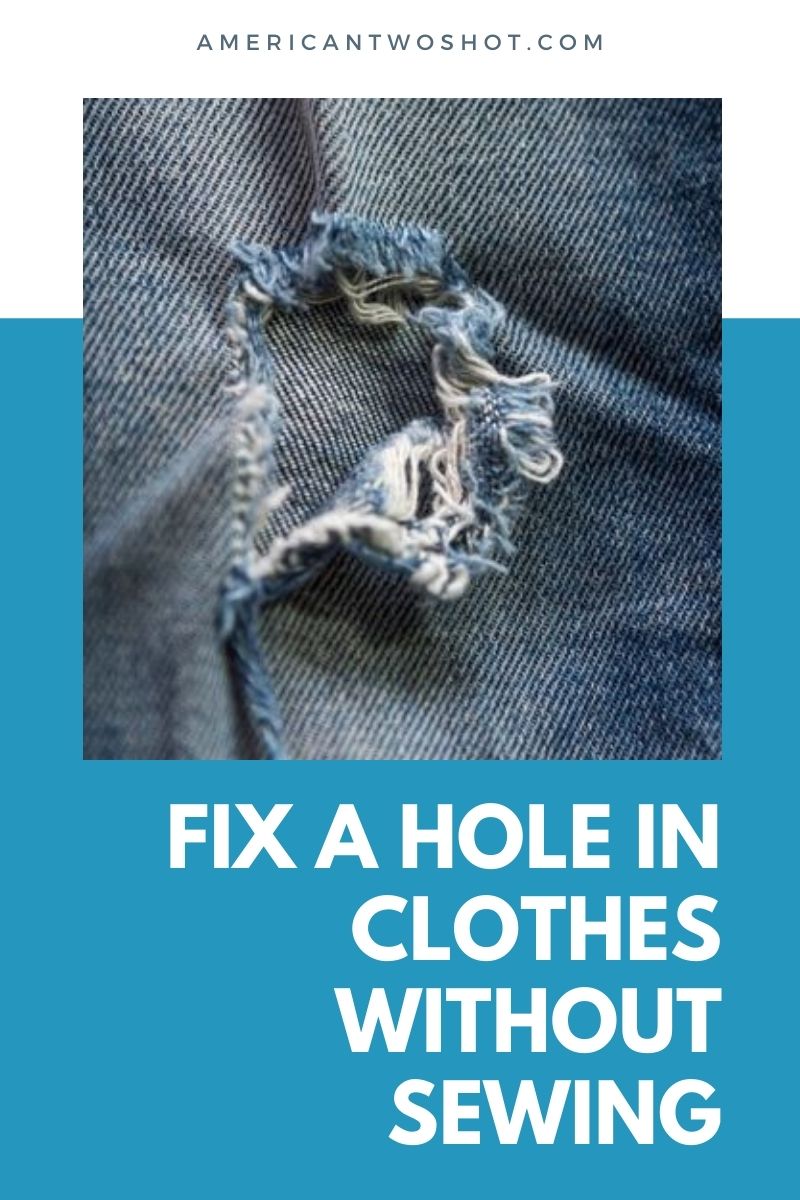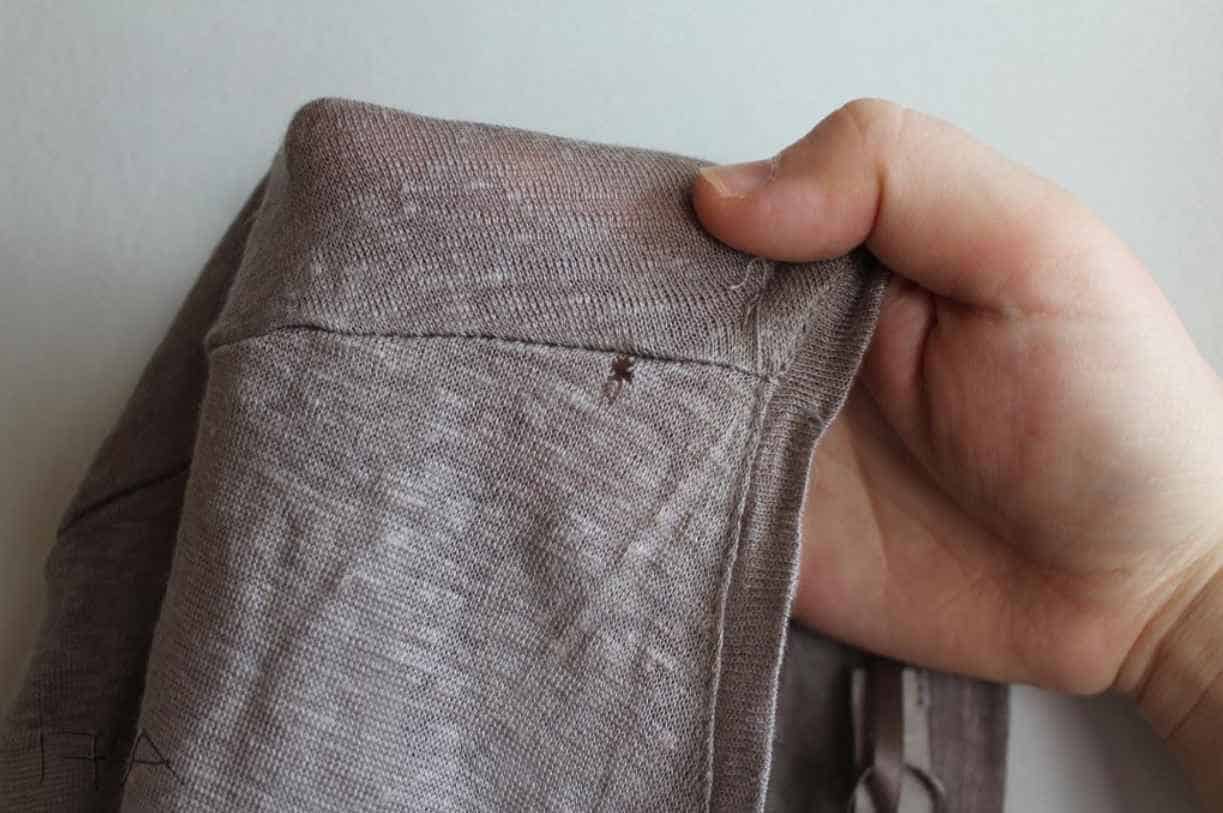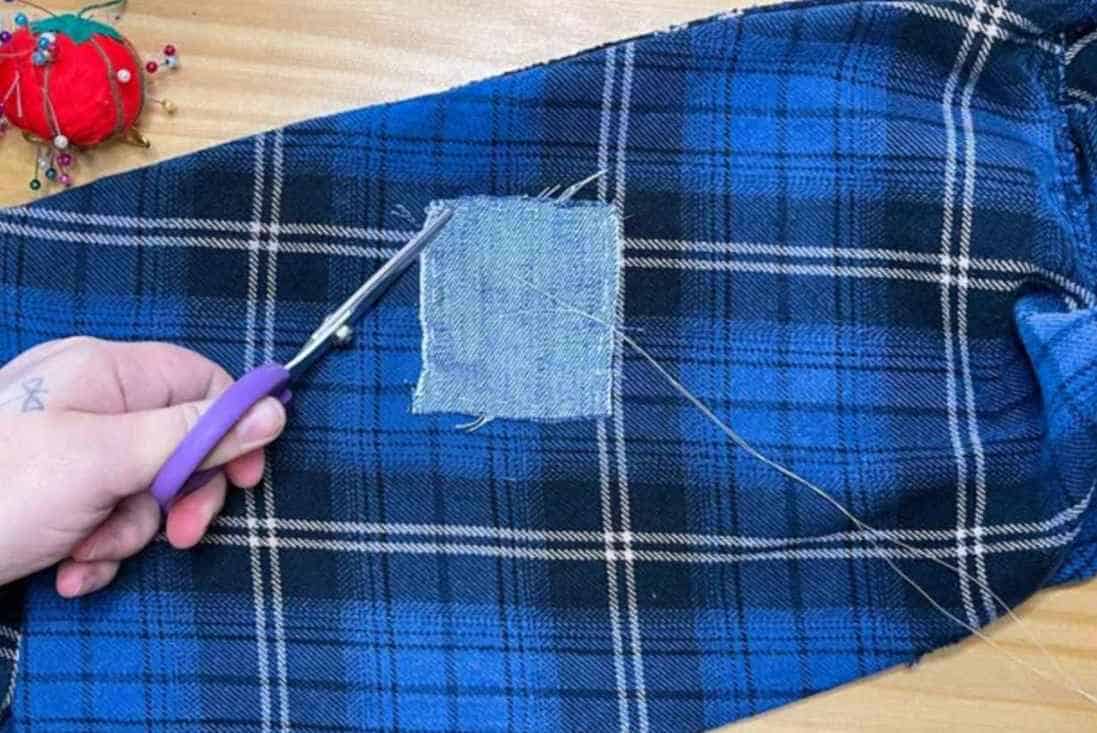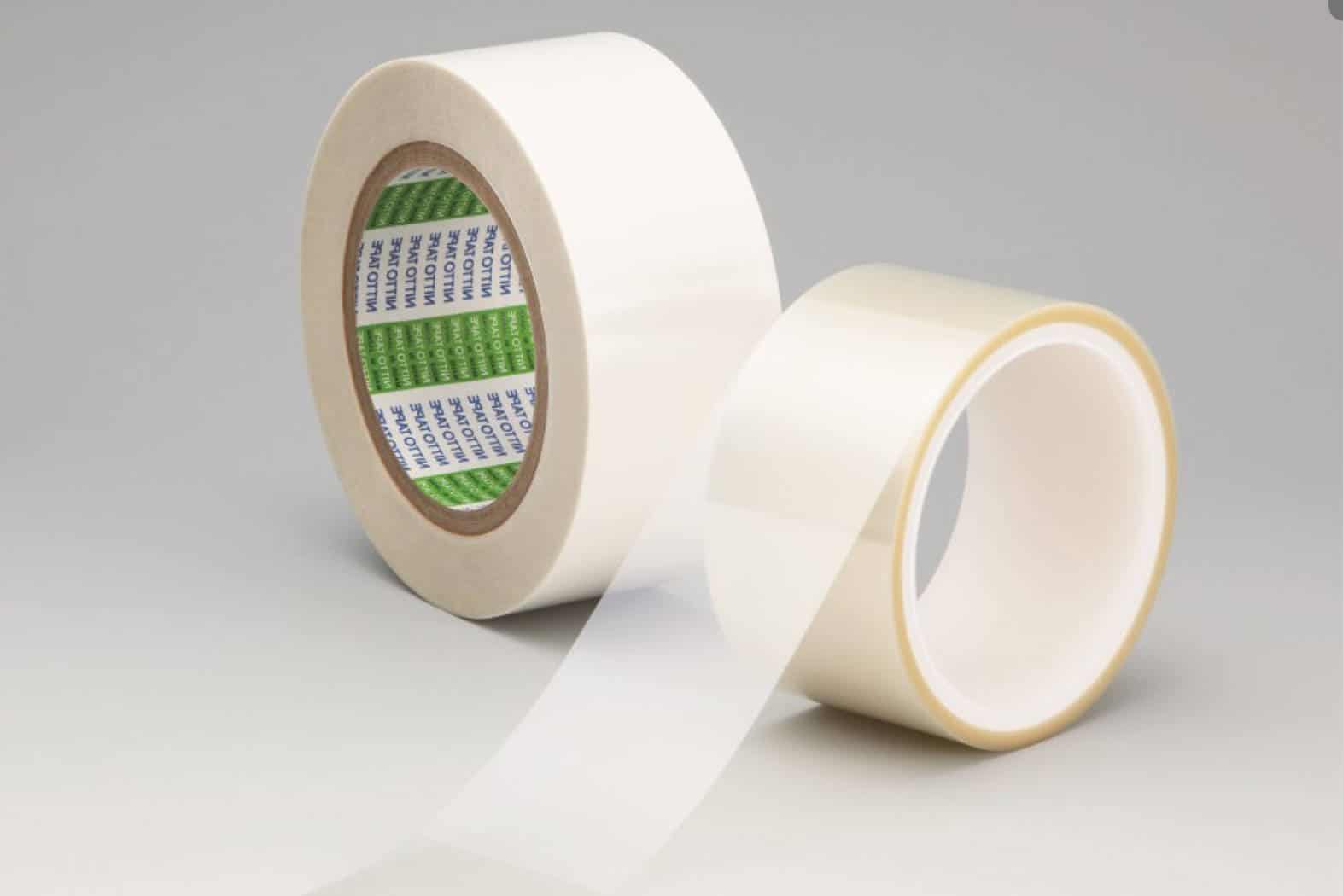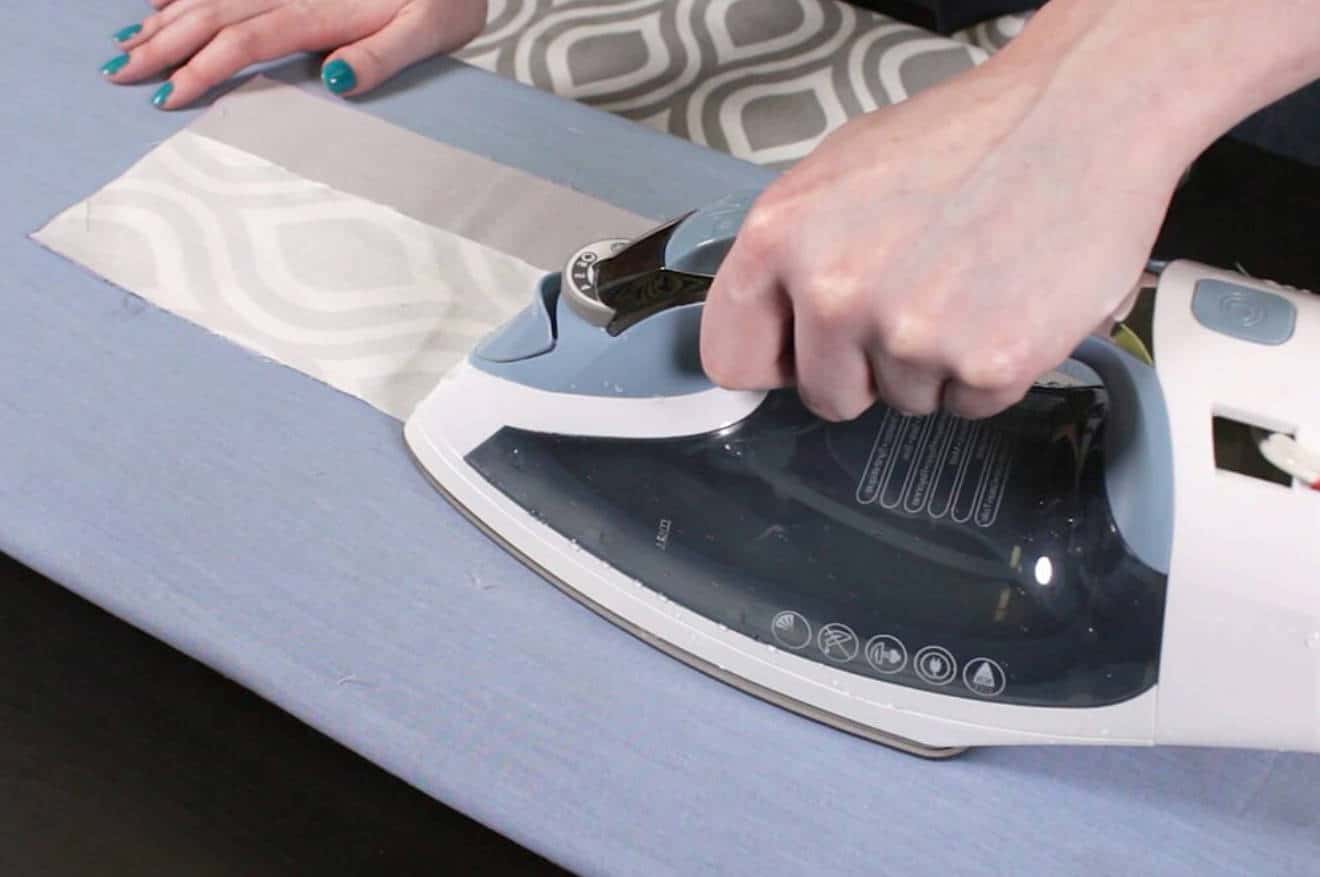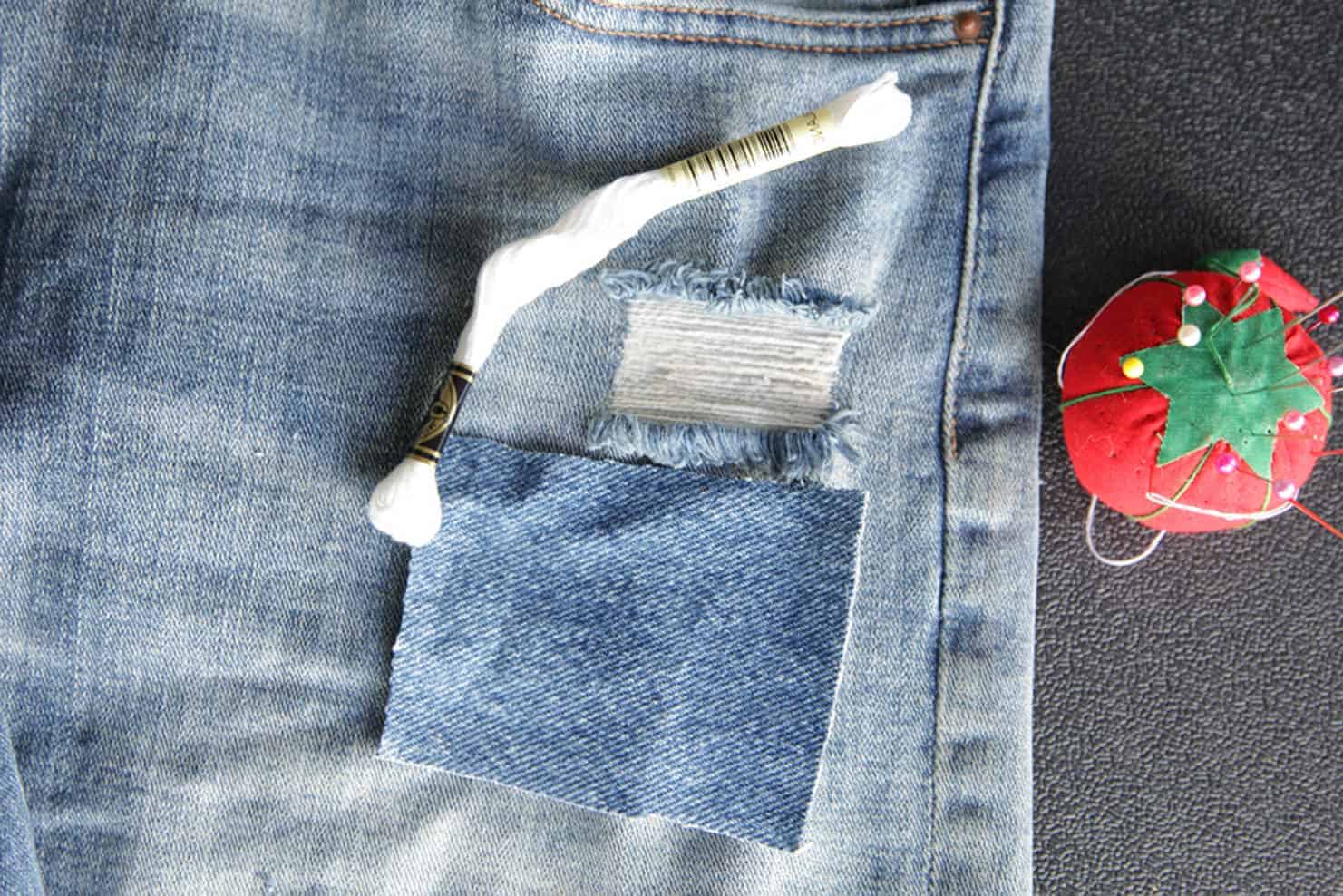Love’s the most powerful thing in the world, they say. Indeed, it is. Sometimes even up to the point of significantly loving something, causing its downfall. Or, in this case, the wear and tear of your favorite piece of clothing.
Here’s how to fix a hole in clothes without sewing.
Hole in the Wall (I mean, shirt!)
First things first, though. Why do holes occur in clothing?
- Clothes are in constant friction with your accessories, such as belts and the top of your jeans. If you notice, holes commonly appear on the same spot at the bottom. This is the primary abrasion point of shirts.
- The fabric itself. Simply put, the thinner it is, the more prone to tear.
- Those troublesome moths are to blame as well! Typically, they go for sweaters and cardigans. But don’t worry. You can always prevent moths from eating your clothes.
- You’re probably using too much chlorine bleach, which is a no-no.
- In relation to bleach and another washing-related reason, reduce your spin cycle speeds.
Patch it Up!
You might want to rethink throwing away damaged clothing just because you can’t sew. Ever thought of where those clothes end up in?
The landfill, I tell you! Mother earth wouldn’t want that. And neither should you. Besides, repairing your clothes can be “revolutionary,” as British Vogue puts it.
What, then, can you do instead of sewing? (Or, God forbid, throw it out?)
Why patch it up, of course!
This can be tricky, though, because you will want to use a patch from the same fabric to obtain the best results. You can cut some of the original clothing to serve as your patch. Another option would be to buy a similar material and make a cutout.
Still, whatever patch you can find and get your hands on will work as long as it’s enough to cover the hole.
Just follow these steps on how to fix a hole in clothes without sewing:
- Cut out a circular shape to cover up the hole. Fear not if the patch fabric isn’t the same. Opting for a different one can actually brighten your clothes and showcase your quirky side!
- Next, you can choose between a fabric glue or a fusible web to attach the patch. Either is an excellent option because of their durable and washable attributes.
- If you choose fabric glue, ensure that you apply it on all sides of the patch.
- Contrarily, the other method involves cutting strips of the fusible web. Apply the sticky side to your patch. Iron it after. Then, remove the web paper. Observe this step for both sides of the hole.
See how easy that is? Who needs a sewing kit or any sewing skills? Patching that hole can be a helpful alternative for you.
Disappearing Act with a Fusing Web
Our next magic trick is something you’re already familiar with. The difference this time around? It doesn’t require a patch. The plain old fusing web will suffice (and then some).
Did you know that it’s not only for mending clothes, but for applique and quilts as well?
Basically, a fusing web is a type of fiber that melts when heated. It also comes in a variety of weights. Ideally, it would be best if you choose one that weighs closest to your clothes’ fabric.
So how do we do this, then?
- Place the damaged clothing on your ironing board. Flip it inside out and above a parchment paper after. Doing so can prevent the fusing web from seeping through the clothing and into your ironing board.
- Then, you’ll need to press that area with the hole. Make sure that you bring the edges together to make it smaller.
- Cut a piece of fusing web large enough to cover the hole.
- On top of the fusing web, put an even larger piece of stabilizer.
- Heat your ironing to the correct setting, depending on your fabric. Then press the cloth over the stabilizer.
- Dampen the layers by spraying water. Follow it by pressing the iron without shifting the materials below. Do this for about 10 seconds.
- By now, you can flip the clothing to the other side. There’s a possibility that there’s still a tiny visible hole. Push the sides together, then press the iron once again.
After the last step, you’ll see that the hole has vanished.
Hemming Tape, not Ernest Hemingway
Another adhesive kind of solution you can substitute for sewing is hemming tape. Remember to go for a heat-activated one to make the repairing process easier.
Moreover, hemming tape comes in thick or thin types. What you’ll choose depends on the fabric that needs repair.
The thick one is best for:
- Canvas
- Corduroy
- Denim
- Wool
- Suede
On the other hand, the thin type is ideal to use for:
- Cotton
- Chiffon
- Linen
- Rayon
- Silk
Here are the steps you need to follow on how to fix a hole in clothes without sewing:
- Find a hemming tape that will complement your fabric. This is to avoid highly noticeable differences. The right hemming tape can blend in your fabric.
- Simply cut a strip that is larger than the hole. While doing so, you can preheat the iron as well.
- Place the cut tape above the hole and press the iron in it. A warning, though. A couple of seconds will suffice for this. Anything longer can melt away all the tape you are using.
- Lastly, make sure to air out your fabric. You wouldn’t want to touch it without cooling it down first.
If hemming tape is not available, you can also use garment tape. This material is readily available in fabric and/or craft stores.
Applying garment tape is closely similar to how hemming tape is used. You must first cut a strip and fix it into the hole.
Basically, that’s all there is to it. But the downside is that using garment tape can only last for so long if the spot you’re trying to fix is located somewhere with minimal to no motion.
Choosing the Alternatives
Even though a basic skill that people should have in their arsenal, sewing can still be replaced by other methods. There are no sewing police here to call you out on that.
So, for anyone who doesn’t have the patience to sew or has Aichmophobia (fear of sharp objects, including needles), fear not because there are other means to repair your clothes.
Aside from preferences and phobias, here are some of the reasons for you to deviate from the traditional sewing method:
- You can use patches, fusing web, or hemming tape anywhere in your clothes. Using one of these three is better for achieving a no-hole effect. Unlike sewing, which, when done on the front of a shirt can be very visible, the other three methods are not that noticeable. You get to maintain that original look of your favorite shirt.
- Don’t have sewing materials and equipment? No problem. The three methods we discussed don’t need them. Most of the materials you will need can be found in your household or easily bought in a store.
- Some holes are not that significant. For these cases, it would be better to forego the stitching and choose one of the three alternatives mentioned in this article.
- Holes don’t always appear on areas that are easy to sew. When this happens, you can just use a patch, a fusing web, or hemming tape. It’ll be less stressful for you.
- If the hole is extensive and you have room to make alterations to your damaged clothes, I suggest just cutting out the part with the hole in it. Hey, you can even turn that t-shirt into a fabulous cropped top!
Prevention is Better than Cure!
After everything we’ve tackled so far, it’s still better to prevent holes from appearing in your clothes.
You’ve been asking how to fix a hole in clothes without sewing. Why not prevent it from happening altogether?
But I guess prevention is out of the question if you’re scrolling through this article in one hand and holding that damaged piece of clothing in the other. Still, you can’t deny that preventing this from happening is the best course of action.
Why? Because there won’t be a problem in the first place.
Ultimately, it all comes down to how you wash it. Because the way you wash your clothes says a lot about how you care for them.
Wrapping Up
There you go, three alternatives on how to fix a hole in clothes without sewing. You can use patches, fusing web, or hemming tape.
Just follow our instructions, try not to burn yourself, and you should be good to go wherever– dressed impeccably, might I add. Happy repairing!

Jessica Oliver is a fashion enthusiast with more than ten years of experience in the industry. She previously managed her own clothing store in New York before becoming a mother of three. With a passion for sustainability and a desire to share clothing care and recycling tips.

